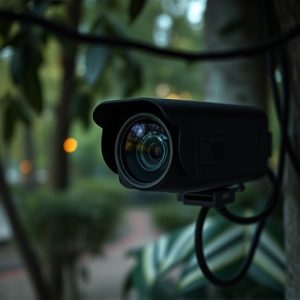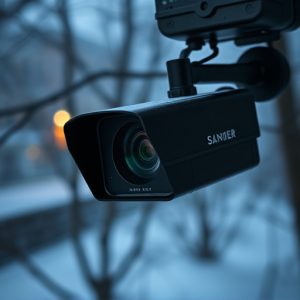Remote Viewing Nanny Surveillance Systems: Professional Placement Guide
The Remote Viewing Nanny Surveillance System offers parents remote childcare monitoring through live…….
The Remote Viewing Nanny Surveillance System offers parents remote childcare monitoring through live video and audio feeds, high-definition cameras, and secure software accessible via intuitive apps. Its implementation requires defining surveillance goals, staying current with regional laws, adhering to ethical guidelines (transparency, data minimization, secure storage, prompt deletion), obtaining explicit consent from caregivers, setting clear boundaries, and complying with data collection and usage regulations to ensure a safe, trustworthy environment for both parents and children.
“Uncover the world of remote viewing nanny surveillance systems with our comprehensive guide, designed for professionals. This article navigates the intricate landscape of covert monitoring technologies, offering a detailed overview for effective implementation. From understanding the intricacies of remote viewing systems to key considerations for strategic device placement and exploring ethical, legal dimensions, we empower professionals to make informed decisions. Discover how these systems can enhance care while ensuring privacy, making it an indispensable resource in today’s world.”
- Understanding Remote Viewing Nanny Surveillance Systems: A Comprehensive Overview
- Key Considerations for Professional Placement of Covert Monitoring Devices
- Ethical and Legal Aspects of Implementing Remote Nanny Surveillance Technologies
Understanding Remote Viewing Nanny Surveillance Systems: A Comprehensive Overview
The term Remote Viewing Nanny Surveillance System refers to cutting-edge technology that enables professionals to monitor childcare settings remotely. This innovative solution offers parents peace of mind by allowing them to observe and interact with their children via live video and audio feeds from a distance. With real-time data access, these systems provide an unprecedented level of control, ensuring the safety and well-being of kids while they’re in the care of nannies or at daycare centers.
A comprehensive overview of these systems is crucial for understanding their capabilities and limitations. Remote Viewing Nanny Surveillance Systems employ high-definition cameras, motion sensors, and advanced software to capture and transmit data securely. Parents can access this information through user-friendly apps on their smartphones or computers, allowing them to stay connected with nannies, monitor activities, and receive alerts for any unusual occurrences. This technology has revolutionized childcare monitoring, but it’s essential to consider privacy concerns and adhere to legal guidelines governing its use.
Key Considerations for Professional Placement of Covert Monitoring Devices
When placing a covert monitoring system, such as a Remote Viewing Nanny Surveillance System, professionals must carefully consider several factors to ensure effectiveness and legality. The first step involves identifying the primary goal of surveillance—whether it’s for childcare, elder care, or another sensitive setting. This determination dictates the specific type and placement of devices, like hidden cameras or audio recorders, which should be discreetly integrated into the environment without compromising privacy or deterring natural behaviors.
Legalities and ethical guidelines are paramount. Professionals must stay updated on regional regulations regarding surveillance technology to avoid any legal pitfalls. Additionally, transparency with individuals being monitored—where applicable—is crucial for maintaining trust and ensuring informed consent. Ethical considerations also include minimizing data collection, storing information securely, and deleting it promptly when no longer needed.
Ethical and Legal Aspects of Implementing Remote Nanny Surveillance Technologies
Implementing a remote viewing nanny surveillance system raises significant ethical and legal considerations that must be carefully navigated. While technology offers unprecedented opportunities for monitoring, it’s crucial to respect privacy rights and maintain transparency. Parents seeking such solutions should ensure explicit consent from caregivers, clearly define the scope of surveillance, and adhere to regional laws governing data collection and use.
Ethical dilemmas arise from the potential invasion of personal space and autonomy. Caregivers have a right to privacy, and constant observation can create an uncomfortable environment for both parties. Legal frameworks, such as those around video recording and data protection, must be thoroughly understood to avoid violations that could lead to severe consequences, including loss of trust and legal repercussions.
A well-placed covert monitoring system, particularly a Remote Viewing Nanny Surveillance System, can offer peace of mind for parents seeking professional childcare. However, it’s crucial to balance technological advancements with ethical considerations and legal frameworks. By understanding the technology, meticulously planning device placement, and adhering to moral standards, parents can leverage these systems effectively while ensuring the privacy and dignity of caregivers. Navigating this delicate landscape requires a thoughtful approach that prioritizes both safety and respect in the professional realm of childcare.


